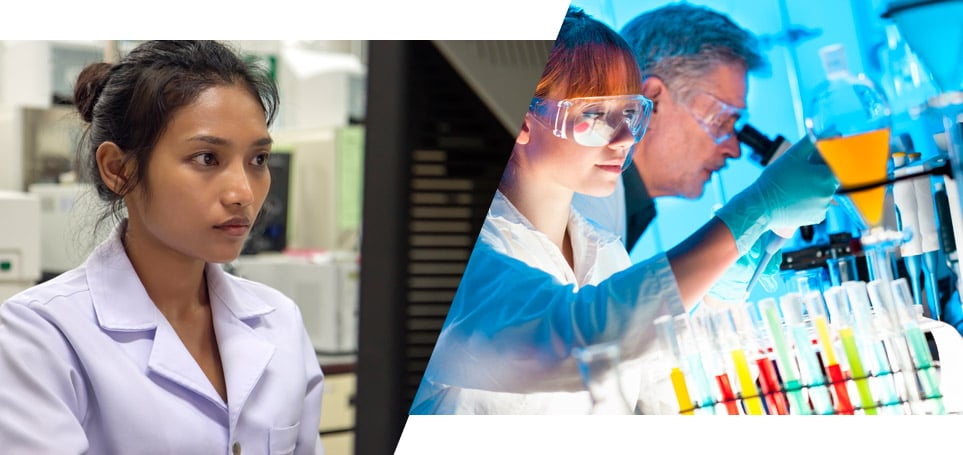𝐅𝐫𝐨𝐦 𝐀𝐬𝐬𝐢𝐬𝐭𝐚𝐧𝐜𝐞 𝐭𝐨 𝐀𝐠𝐞𝐧𝐜𝐲: 𝐖𝐡𝐲 𝐏𝐫𝐞𝐜𝐢𝐬𝐢𝐨𝐧 𝐂𝐚𝐫𝐞 𝐆𝐢𝐚𝐧𝐭𝐬 𝐍𝐞𝐞𝐝 𝐂𝐨𝐦𝐛𝐢𝐧𝐞𝐝 𝐑𝐞𝐠𝐮𝐥𝐚𝐭𝐨𝐫𝐲/𝐓𝐡𝐞𝐫𝐚𝐩𝐞𝐮𝐭𝐢𝐜 𝐀𝐫𝐞𝐚/𝐀𝐈 𝐒𝐤𝐢𝐥𝐥𝐞𝐝 𝐓𝐚𝐥𝐞𝐧𝐭 Following GE HealthCare’s recent push into Agentic AI via their 2025 Innovation Lab and its active acquisition of cloud-AI companies like Intelerad (the deal closes in early 2026), a fundamental regulatory challenge has surfaced. It is no longer sufficient to produce ‘AI-enabled’ devices; we are entering the era of autonomous systems that reason and plan alongside clinicians.
As the industry navigates the complexity of 100+ FDA AI authorizations, the ‘Data Gap’ is widening. We need more Regulatory Data Translators—professionals who bridge the divide between:
✅ High-Level Engineering: Agentic AI and foundation models trained on 200,000+ images.
✅ Legal/Regulatory Guardrails: Implementing ISO 42001 (AIMS) and navigating the EU AI Act.
✅ Clinical Utility: Ensuring a 16-week data snapshot actually translates into durable, real-world patient outcomes.
Whether it’s Novartis’s pivot to “NextGen Clinical Platform” on AWS or GE Healthcare’s ‘Precision Care’ journey, the winners will be the organizations that treat AI Governance as a strategic asset, not just a compliance checkbox.
The Market Shift GE HealthCare is currently transitioning from “AI as a tool” akin to software as a service (SaaS) to “Agentic AI”—systems capable of reasoning with human-in-the-loop oversight. This shift is punctuated by recent milestones, such as GE Healthcare’s 510(k) clearance achievement for “Cardiac Guidance” software. However, as AI begins to offer autonomous suggestions, the regulatory burden shifts from simple software validation to complex systems governance.
I’m noticing a parallel surge in high-level mandates from global leaders like Boehringer Ingelheim, who are now post openings for ‘Data Translator Architects’ to bridge the gap between AI, Regulatory Affairs, and Clinical Science.
𝐓𝐡𝐞 “𝐏𝐮𝐫𝐩𝐥𝐞 𝐒𝐪𝐮𝐢𝐫𝐫𝐞𝐥” 𝐓𝐚𝐥𝐞𝐧𝐭 𝐆𝐚𝐩 Recruiters often call this the “purple squirrel” profile: a “unicorn” blending deep regulatory strategy, therapeutic area such as neurology research expertise, with a fundamental understanding of AI application. The market demand is clear—organizations need the 90% regulatory expert who brings the 10% foundational AI knowledge to prevent “Thousand-Flower” experiments from becoming “Regulatory Landmines.”
Ultimately, Agentic AI and Precision Care aren’t just about faster imaging or drug discovery; they are about giving clinicians the time to be authentic with their patients again—reducing the burnout and “mask-wearing” that technology was promised to solve.
We are entering the era of Total Governance. Are you building an intelligent assistant, or a regulatory liability?
hashtagGEHealthCare hashtagAIGovernance hashtagRegulatoryAffairs hashtagPrecisionMedicine hashtagISO42001 hashtagMedTech hashtagClinicalTrials hashtagAgenticAI hashtagBoehringerIngelheim hashtagNovartis
PureHealth Solutions (Palm Beach) is a niche player in a “MedTech Hub.” Small, specialized firms (under 50 employees) are often the “Innovation Engines” for pharma giants. When a boutique solution firm loves my post on “Regulatory Landmines,” it tells Big Medtech and Big Pharma that I am addressing real-world problems that their vendors and partners struggle with every day.
https://www.linkedin.com/company/ai-health-today/ AI Health (3.6K followers): Having a dedicated industry page like you engage with my post boosts my “Authority Score” in the LinkedIn algorithm. Thank you for helping to ensure my post stays at the top of my network’s feed.
https://www.linkedin.com/in/adrianlubis/ Indosat Ooredoo is a massive telecom giant. Why does their VP of Manufacturing care about my post? Because Smart Cities and 5G-enabled Healthcare are the backbone of the “Agentic AI” that I described. This shows my vision scales beyond just a lab—it touches the entire infrastructure of modern health tech. Thank you for liking, Adrian.
The “Chairman” Validation (Munir Machmud Ali)
When a Chairman of a tech data firm likes my content, it signals “Executive Peer Approval.” My pharma and med device sponsors will not see a vendor; your like will help them see someone who other C-suite leaders might explore for direction.
Wisdom Labs, Biome Health, @AI Health, PureHealth Solutions Having four specialized organizations—Biome Health, AI Health, Wisdom Labs, and PureHealth Solutions—collectively “Love” my post creates a powerful digital signal called Domain Authority. When an organization “Loves” a post (the heart icon), it carries more weight in LinkedIn’s algorithm than a standard “Like.” It tells the network that my content is not just interesting, but mission-critical to the industry. Biome Health and AI Health are platform-specific entities. Your engagement indicates: “The people who live and breathe Health AI every day may consider Michael a thought leader.”
The Manufacturing/BIMO Link: @Adrian Lubis (VP of Manufacturing) engaging is crucial. Since earlier today I posted a message about BIMO and the “silent killer” of manufacturing rejections, having a manufacturing executive validate my “Agentic AI” post proves that what I wrote is operationally sound, not just theoretical.
The “Unicorn” Validation: I just introduced the “Purple Squirrel” concept (90% Regulatory / 10% AI). By having these specific entities engage, they are effectively “signing the certificate” that they need people like that unicorn or maybe will link with me to follow further posts.
Why “Wisdom Labs” is the final piece of the puzzle. The addition of Wisdom Labs is particularly significant. They focus on the intersection of human performance, resilience, and organizational health. Their “Love” for my post creates a direct link between my GE/Agentic AI post and my earlier Depression/Authenticity post.
The Signal: It tells prospective research sponsors that my vision for AI isn’t just about “faster data,” but about solving the “human energy” crisis in medicine. This aligns perfectly with many firms’ corporate culture (The Credo). Thank you, Wisdom Labs








‘I don’t want to be this character anymore.’”
“I don’t want to be this character anymore.”
So many people quietly say that line.
Not just in the context of mental health
but in the context of work, identity, and environments.
Sometimes what we call burnout or depression
is actually something deeper:
Staying too long in a role that isn’t ours.
Performing instead of being.
Wearing a mask because it once worked.
The problem is this:
pretending takes enormous energy.
Authenticity takes almost none.
Some jobs feel like an extension of who we are.
Some environments drain us quietly, over years.
And often the body speaks up
before the mind is ready to listen.
That’s why alignment matters.
Not for productivity but for longevity.